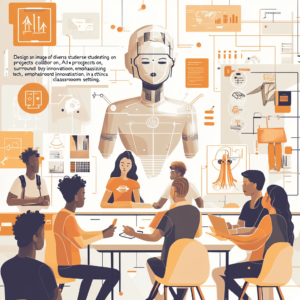
Ethical Considerations of AI Writing Tools in Education
The Ethics of AI Writing Tools in Schools: A Brewed Debate
Picture a classroom bustling with eager students, pens flying across pages, and suddenly—poof!—a revolution arrives in the form of AI writing tools. The landscape of learning has been flipped on its axis. Suddenly, these digital scribes are at students’ fingertips, ready to transform rough drafts into eloquent masterpieces. But here’s the million-dollar question: are we stirring up a pot of ethical dilemmas when we allow AI in academia? Buckle up as we delve into this engaging discourse that’s equal parts coffeehouse chat and academic debate.
The Double-Edged Sword of AI Writing Tools
Let’s face it: AI writing tools like ChatGPT can be charming companions on the winding road of education. They won’t pen an immersive novel (at least, not yet), but they do provide assistance that can feel like a warm cup of cocoa on a cold winter’s day. However, do they come with a set of ethical questions that can send even the most composed educator spiraling? Absolutely. Let’s break it down.
Benefits: A Steaming Cup of Opportunity
- Skill Development: Forget the old-fashioned chalk-and-talk—AI assists students with real-time feedback on grammar and structure. Watching mistakes tumble away like leaves in autumn, students can learn not just to correct but to grow. It’s a pedagogical renaissance in the making[1].
- Accessibility: For individuals facing language barriers or learning challenges, AI writing tools can serve as a beacon of hope. It’s akin to giving someone a pair of glasses—things that were once unclear now shine in brilliant clarity[1][4].
- Digital Literacy: In this age where tech-savvy is as vital as learning the abcs, students must know how to navigate AI tools responsibly. It’s like teaching a kid to ride a bike; with guidelines, they’ll not only ride safely but also learn the joy of cycling on their own[1][2].
Concerns: The Bitter Aftertaste
- Plagiarism & Authenticity: Submitting AI-generated prose as one’s own work crosses into murky waters. When lines blur between inspiration and outright theft, we face a slippery slope of academic dishonesty. Will students start thinking plagiarism is a game?[1][3].
- Bias: AI isn’t impartial; it’s a pattern-recognition beast feeding off a buffet of training data. The result? Outputs that can unknowingly propagate biases or stereotypes—an unsettling thought when we consider who’s educating the next generation[3][4].
- Dependency & Creativity: What if, in our quest for efficiency, we inadvertently numb the creative spirit? AI can assist, but depending too much on it might snuff out a student’s unique voice in writing, like an overzealous editor red-lining their originality[1][5].
Navigating the Gray Areas
So, between the temptations of AI’s abilities and the perils of misuse, how do educators steer this ship? It’s a delicate dance, but with the right moves, it’s possible to cultivate an environment that respects both innovation and integrity.
Transparency & Guidelines
Clear communication can indeed be the magic wand that transforms chaos into order. Teachers should:
- Model Ethical Use: Instead of hiding AI use, let’s be open about it. “I employed ChatGPT for this lesson plan, and here’s why” can demystify the process and frame it as a collaboration rather than cheating[2].
- Set Boundaries: Tools like the AI Assessment Scale serve as guides for determining what’s acceptable AI assistance for specific assignments. Some may allow drafting, while others may permit editing only[2].
- Document Everything: Ensure accountability by requiring a “process log” where students note how they utilized AI in their work. This habit can differentiate between collaboration and dishonesty[2].
The Obfuscated Role of Detection Tools
We live in a world of tech, and it’s presumed that tech can save us from all our worries, right? Enter AI detectors like GPT-Zero, which boast the ability to identify AI-generated text. However, they often miss the mark, falsely flagging non-native speakers or students with unique styles. The best instrument for detection? A teacher’s nuanced understanding of a student’s writing—and frequent feedback becomes the key in opening communication doors[2][3].
Educators’ Dilemmas
Here’s a fun twist: a USC study reveals that teachers’ gender and tech confidence impact how they embrace AI. Some teachers adopt a stern rule-based approach (“No AI, period!”), while others lean towards outcome-based ethics (“If it fuels learning, let’s use it”). Consider it the educational tango! Where do we find the two-step that keeps integrity intact? The answer lies in nuanced understanding, not black-and-white interpretations[5].
Conclusion: A Call to Action
AI writing tools are like the new kid in town—untamed, vibrant, and full of potential, but also flashing warning signs. The ethical choice, rather than casting a blanket ban, is to teach students to wield these tools wisely. Schools must:
- Update Policies: Clearly define the role and limits of AI, and establish consequences for any misuse.
- Focus on Process: Rather than grading solely on final products, account for contributions, drafts, and critical engagement throughout the process.
- Teach Critical Evaluation: Equip students to scrutinize AI outputs, spot biases, and verify information independently[4].
Want to stay up to date with the latest news on neural networks and automation? Subscribe to our Telegram channel: @ethicadvizor

